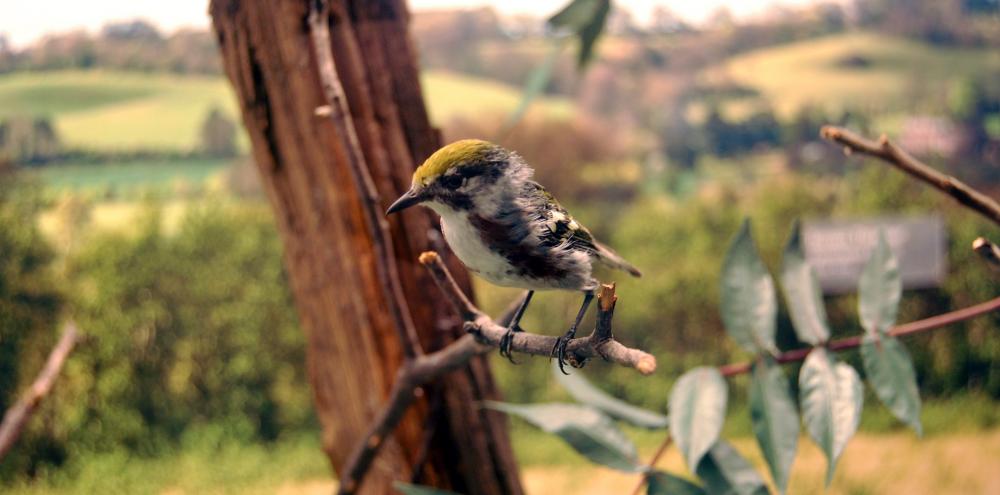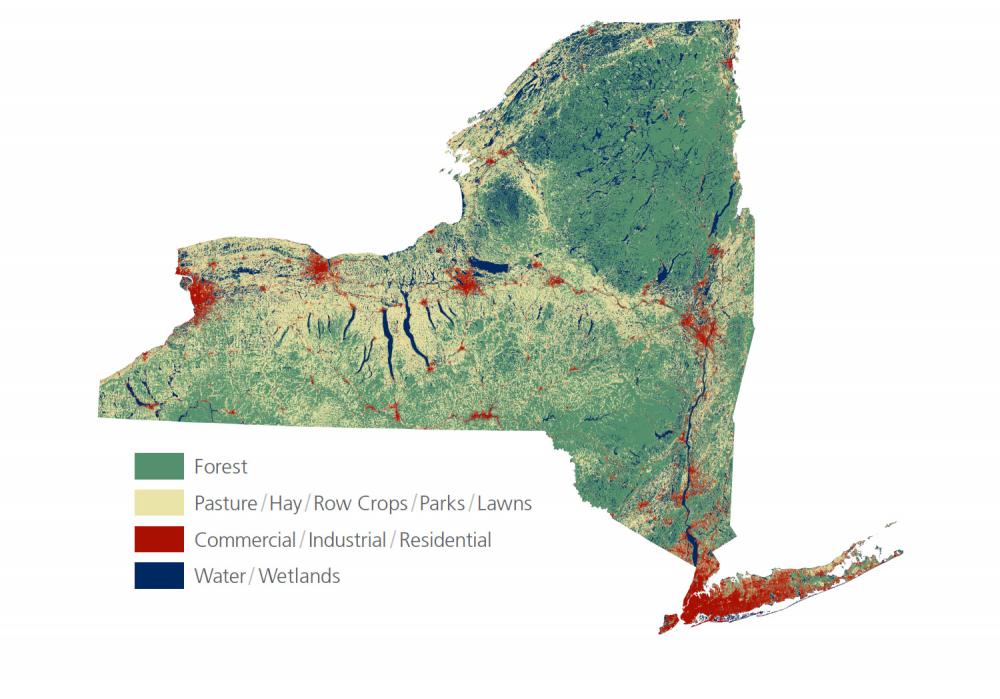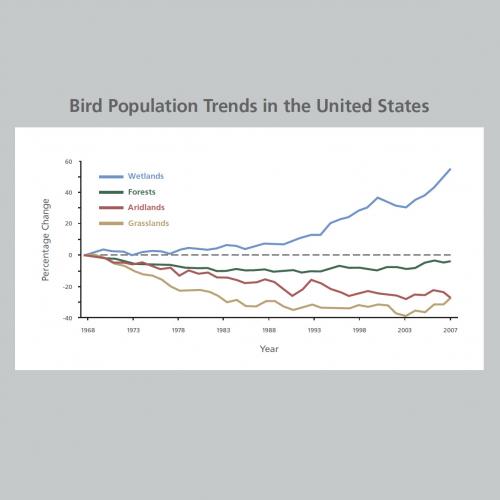
Fields and Shrublands
Natural grasslands and shrublands are rare in New York. As people altered the landscape to establish farms and villages, birds that use open habitats began to flourish. Today these birds largely depend on agricultural and other human-maintained areas.
Birds that are adapted to live in grasslands and the shrubby edges of forests are the species most familiar to us. Farms and suburban neighborhoods provide the fields, thickets, and open woodlands favored by many nesting songbirds and raptors.

Attractive Adaptations
Birds found in fields and shrublands include some with the brightest plumage and best birdsong. Male Indigo Buntings, Northern Cardinals, and Prairie Warblers attract females by showing off their bright feathers and energetically singing from a noticeable perch. Singing requires a lot of energy! These birds are announcing that they are in good physical shape and control a territory with plenty of food for a nest full of hungry babies.
Declining Grasslands
The amount of farmed land in New York declined in the 20th century as human populations shifted from farm communities to cities. Many farms reverted to forest or were developed into suburban neighborhoods. The loss of fields and pastures caused the decline of several bird species that inhabit grasslands, like Eastern Meadowlark, Bobolink, and Loggerhead Shrike.

Open Habitats
Open habitats (highlighted in yellow in the map below) are found in all parts of New York but are especially prevalent in the Great Lakes and St. Lawrence Plains and in the Mohawk and Hudson River valleys.









